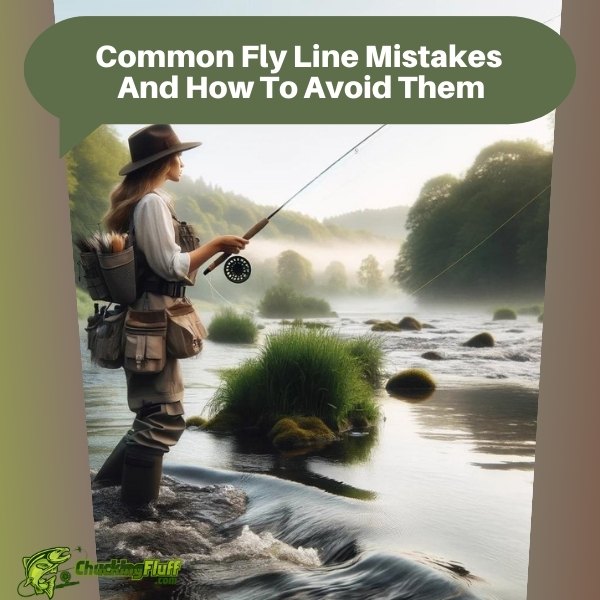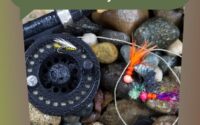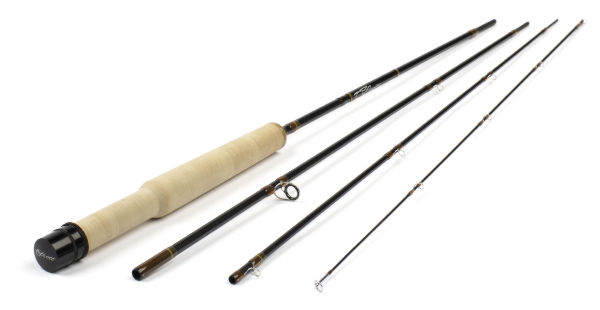| Disclosure: Just to be open and honest the buttons and links you click on in the website will in most cases take you to another website where you can purchase the products I am reviewing. As an Amazon Associate I earn from qualifying purchases. |
Common Fly Line Mistakes And How To Avoid Them

Fly fishing is as much an art as it is a science, requiring skill, patience, and attention to detail. While many anglers focus on the fly patterns and techniques, the importance of the fly line is often overlooked. Yet, choosing the right fly line and using it correctly can significantly impact your success on the water. In this article, we’ll explore some common fly line mistakes and how to avoid them, ensuring a more enjoyable and productive fishing experience.
Quick Post Navigation
- Choosing the Right Fly Line
- Common Mistake: Incorrect Line Weight
- Mistake: Ignoring Taper
- Neglecting Line Maintenance
- Incorrect Presentation
- Overlooking Line Density
- Improper Casting Technique
- Not Adjusting for Conditions
- Skipping Leader and Tippet Setup
- Ignoring Wind Conditions
- Using Worn-out Line
- Improper Line Control
- Not Matching Line Color to Conditions
- Conclusion
- FAQs
- “Check out some of our other Buying Guides”
Choosing the Right Fly Line
The foundation of successful fly fishing begins with selecting the appropriate fly line for your rod and reel setup. Factors such as weight, taper, and density play crucial roles in the performance of your casting and presentation. Before delving into specific mistakes, let’s first understand the significance of these factors.
Common Mistake: Incorrect Line Weight
One of the most common mistakes anglers make is using the wrong weight fly line for their rod and reel. Using a line that is too light or too heavy can lead to casting difficulties, decreased accuracy, and even potential damage to your equipment. To avoid this mistake, it’s essential to match the line weight to the specifications of your rod and reel.
Determining the appropriate line weight involves considering factors such as the rod’s action and the type of fishing you’ll be doing. For example, a fast-action rod may require a heavier line to load properly, while a slower action rod may perform better with a lighter line. Additionally, the type of flies you’ll be casting and the size of the fish you’re targeting should also influence your line weight choice.
Mistake: Ignoring Taper
Another common mistake is neglecting to consider the taper of the fly line. The taper refers to the gradual change in diameter from one end of the line to the other and plays a significant role in casting accuracy and presentation. There are various types of taper, including weight-forward, double taper, and shooting taper, each suited to different fishing conditions and techniques.
Using the wrong taper can result in poor casting performance and difficulty controlling the line during presentation. For example, a weight-forward taper is ideal for long-distance casting and handling larger flies, while a double taper offers more delicate presentation and precise control in smaller streams. Matching the taper to your fishing style and conditions is essential for maximizing your success on the water.
Neglecting Line Maintenance
In the hustle and bustle of preparing for a fishing trip, it’s easy to overlook the maintenance of your fly line. However, neglecting regular cleaning and inspection can lead to decreased performance and durability over time. Dirt, debris, and salt buildup can accumulate on the line, causing it to become stiff, prone to tangling, and less buoyant.
To avoid this mistake, make it a habit to clean your fly line regularly with a mild soap and water solution. After cleaning, thoroughly rinse and dry the line before storing it away. Additionally, inspect the line for any signs of wear, such as cracks, nicks, or abrasions, and replace it if necessary.
Incorrect Presentation
Presentation is a critical aspect of fly fishing, influencing the naturalness of your fly’s drift and the likelihood of enticing a strike. However, many anglers struggle with achieving precise presentation due to poor casting technique or improper line control. To improve your presentation accuracy, focus on refining your casting technique and mastering line control. Start by practicing your casting in different fishing scenarios, paying attention to factors such as line speed, trajectory, and line loop formation. Experiment with different casting angles and rod movements to achieve the desired presentation.
In addition to casting technique, proper line control is essential for accurate presentation. This involves managing the amount of slack in the line, controlling the speed of the drift, and maintaining contact with the fly throughout the presentation. By honing your line control skills, you can effectively manipulate the fly to mimic natural insect behavior, increasing your chances of enticing a strike.
Overlooking Line Density
The density of your fly line plays a significant role in determining its buoyancy and sink rate, which in turn affects casting distance and fishing depth. Different types of line density, such as floating, sinking, and intermediate, are designed for specific fishing conditions and techniques. Ignoring the importance of line density can result in missed opportunities and decreased effectiveness on the water.
When selecting a fly line, consider the depth at which you’ll be fishing and the behavior of the fish you’re targeting. For surface feeding fish, a floating line is ideal for presenting dry flies and surface patterns. Conversely, sinking lines are better suited for fishing deep pools and fast-moving currents, allowing you to reach fish holding in deeper water columns.
Improper Casting Technique
Even with the right fly line and setup, improper casting technique can hinder your success on the water. Common casting mistakes such as tailing loops, off-target casts, and improper line speed can result in decreased casting distance and accuracy. To improve your casting technique, focus on practicing fundamental casting mechanics such as the backcast, forward cast, and loop formation. Start with short, controlled casts, gradually increasing distance and complexity as you become more comfortable with the motions. Experiment with different casting angles, rod movements, and line speeds to find what works best for your casting style and fishing conditions.
Video analysis can also be a valuable tool for identifying and correcting casting errors. Record yourself casting from various angles and review the footage to pinpoint areas for improvement. Pay attention to your rod tip path, line trajectory, and loop shape, making adjustments as needed to achieve smoother, more accurate casts.
Not Adjusting for Conditions
One common mistake anglers make is failing to adjust their fly line selection to changing weather and water conditions. Factors such as wind speed, water clarity, and temperature can significantly impact the effectiveness of different fly lines. By adapting your line choice to the prevailing conditions, you can increase your chances of success on the water.
For example, when fishing in windy conditions, choosing a heavier line with a more aggressive taper can help punch through the wind and maintain casting accuracy. In clear water situations, opting for a more stealthy fly line color and lighter leader setup can prevent spooking wary fish. By staying attuned to the conditions and adjusting your gear accordingly, you can optimize your fly fishing experience.
Skipping Leader and Tippet Setup
While much attention is paid to selecting the right fly line, the importance of the leader and tippet setup is often overlooked. The leader serves as the connection between the fly line and the fly, providing the necessary stealth and presentation for fooling wary fish. Skipping or neglecting the leader and tippet setup can result in missed opportunities and decreased effectiveness on the water.
When setting up your leader and tippet, consider factors such as fly size, water clarity, and fish behavior. For smaller flies and finicky fish, a longer, finer leader with a gradual taper is recommended to achieve a natural drift and presentation. Conversely, when fishing heavy nymphs or streamers in fast water, a shorter, stouter leader setup may be more appropriate for providing the necessary strength and control. Additionally, matching the leader and tippet diameter to the size of the fly and the fish you’re targeting is crucial for ensuring proper turnover and presentation.
Properly setting up your leader and tippet involves tying strong, secure knots and regularly inspecting for any signs of wear or damage. Avoid using old or compromised leader material, as it can lead to break-offs and lost fish. By taking the time to carefully craft your leader and tippet setup, you can maximize your chances of success on the water.
Ignoring Wind Conditions
Wind can be both a friend and a foe to fly anglers, affecting casting accuracy, line control, and presentation. Ignoring wind conditions and failing to adjust your casting technique accordingly can result in frustration and missed opportunities on the water. To effectively cast in windy conditions, it’s essential to adapt your casting technique and fly line selection to minimize the impact of the wind. Start by casting into the wind whenever possible, as this allows the wind to help carry your line and fly toward your target. Additionally, casting with a sidearm or low-angle cast can reduce wind resistance and improve casting accuracy.
Choosing the right fly line for windy conditions is also critical for maintaining control and presentation. A heavier line with a more aggressive taper can help cut through the wind and deliver your fly with greater accuracy. Experiment with different line weights and tapers to find what works best for your casting style and the prevailing wind conditions.
Using Worn-out Line
Over time, fly lines can become worn-out and damaged from exposure to sunlight, dirt, and abrasion. Using worn-out line can negatively impact casting performance, presentation, and durability, leading to frustration on the water. To avoid this mistake, it’s essential to regularly inspect your fly line for signs of wear and replace it as needed.
Common signs of worn-out fly line include cracks, nicks, abrasions, and memory coils. If you notice any of these issues, it’s time to retire your old line and invest in a new one. While it may seem like an unnecessary expense, a fresh, properly maintained fly line can significantly improve your casting distance, accuracy, and overall fishing experience.
Improper Line Control
Line control is a fundamental skill in fly fishing, allowing anglers to manipulate the fly and control the drift for optimal presentation. Improper line control, such as allowing excess slack in the line or failing to mend effectively, can result in missed strikes and decreased success on the water. To improve your line control, focus on mastering techniques such as mending, stripping, and line management. Mending involves repositioning the fly line on the water’s surface to eliminate drag and achieve a natural drift. Practice various mending techniques, including upstream, downstream, and stack mends, to effectively control the presentation of your fly.
Additionally, maintaining proper tension on the line and minimizing slack is essential for detecting strikes and setting the hook quickly. Strip setting, where the angler pulls the line with their stripping hand to set the hook, is a common technique used to ensure a solid hook set. By staying vigilant and actively managing your line throughout the drift, you can increase your chances of hooking and landing fish.
Not Matching Line Color to Conditions
The color of your fly line can have a significant impact on its visibility and stealth in different fishing environments. Ignoring line color and using a brightly colored line in clear, calm water can spook wary fish and decrease your chances of success. Conversely, using a low-visibility line in murky water or low-light conditions can make it difficult to track your fly and detect strikes.
When selecting a fly line, consider the prevailing water and weather conditions, as well as the behavior of the fish you’re targeting. In clear, shallow water, opt for a muted or natural-colored line to avoid alarming fish. In contrast, when fishing in stained or turbulent water, a brighter, more visible line can help you track your fly and maintain control in challenging conditions.
Conclusion
Fly fishing is a rewarding and challenging pursuit that requires attention to detail and a willingness to learn from mistakes. By avoiding common fly line mistakes such as using the wrong weight or taper, neglecting line maintenance, and overlooking wind and water conditions, anglers can increase their chances of success on the water. Remember to match your fly line to your rod and reel setup, practice proper casting technique and line control, and adapt to changing conditions for a more enjoyable and productive fishing experience.
FAQs
Q) How often should I clean my fly line?
A) It’s recommended to clean your fly line after every fishing trip or whenever you notice dirt or debris buildup. Regular cleaning and maintenance will help prolong the life and performance of your fly line.
Q) What is the best fly line for beginners?
A) A weight-forward floating line is often recommended for beginners due to its versatility and ease of use. It provides good casting control and presentation for a wide range of fishing scenarios.
Q) Can I use the same fly line for different fishing conditions?
A) While you can use the same fly line for different conditions, it’s best to match your line to the specific fishing scenario whenever possible. Adapting your line choice to factors such as water depth, clarity, and wind conditions will maximize your chances of success.
Q) How do I know when it’s time to replace my fly line?
A) Signs of wear such as cracks, nicks, and abrasions are indicators that it’s time to replace your fly line. Additionally, if you notice decreased casting performance or increased tangling, it may be time for a new line.
Q) What is the purpose of the leader and tippet in fly fishing?
A) The leader and tippet serve as the connection between the fly line and the fly, providing the necessary stealth and presentation for fooling wary fish. They also absorb shock and provide abrasion resistance, increasing the likelihood of landing fish successfully.


